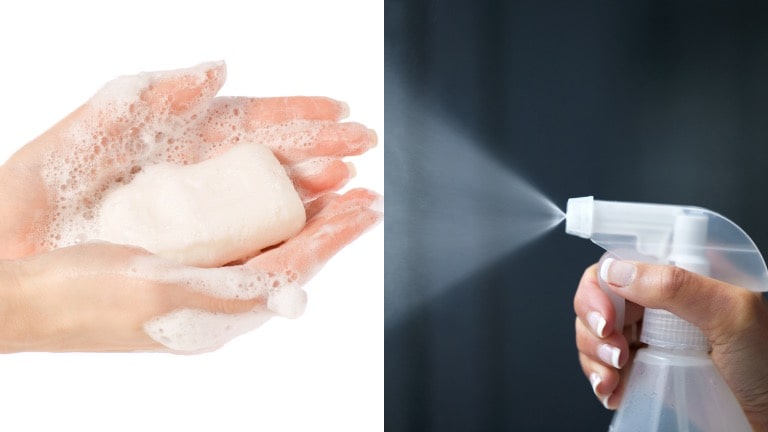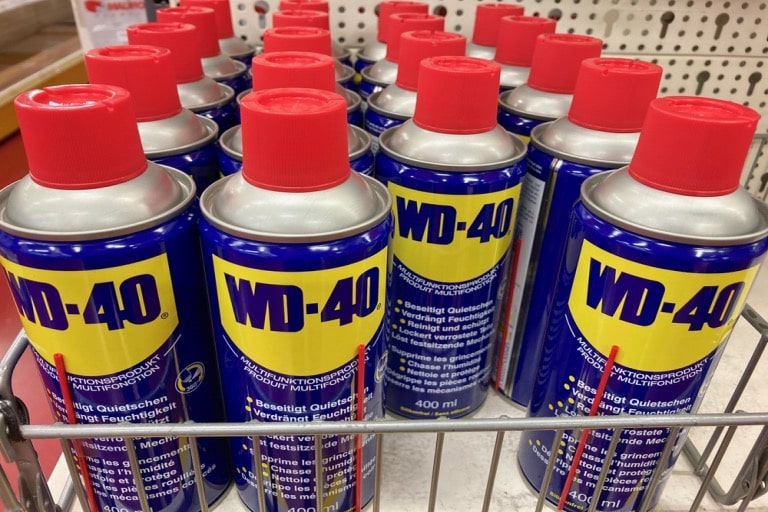A solitary wasp flying by your yard isn’t that big of a deal, and you can just let it be. But a whole nest? It needs to go right away. Read on to learn how to remove wasp nests from your property!
A Couple Questions to Ask Yourself Before You Get Started
I know you’re eager to get rid of that ugly nest. But I need you to slow down and go over these questions first.
Should You Remove It Yourself?
To be fair, leaving it to the pros is never a wrong choice. I highly recommend calling a pest control expert if:
- The nest is under the ground. Remember the guy who started a massive wildfire trying to snuff out an underground nest? Yeah, I’ll pass.
- The nest is inside your home. Scattering wasps indoors is never a smart move.
- The wasps chose an awkward, hard-to-access nesting spot.
- You’re dealing with yellow jackets (ones with yellow and black bands). These are particularly aggressive.
- You’re allergic to wasp stings.
That being said, tackling smaller nests is possible if you’re careful enough.

What Precautions Should You Take?
If you’re going to remove the nest yourself, at least make sure you’re prepared. First, wear long sleeves, a beekeeper’s hat, rubber gloves (sealed with tape at the cuffs), and boots. The goal is to cover as much skin as possible to avoid getting stung. It’s also better to skip the strong perfume. Next, plan your removal attempt a couple of hours after dark. That’s when wasps will be mostly inactive. Oh, and don’t bring a flashlight. The light will draw wasps to you. If you really can’t see in the dark, bring a flashlight but set a red filter over the bulb.
3 Ways to Remove a Wasp Nest
Now, let’s get to the actual removal process. Here are three approaches to try:
Method 1: Over-the-Counter Wasp Aerosol
The obvious move here is to buy a can of insecticide spray and drench the nest with it. Once the wasps are all dead, you can safely remove the nest. But to stay on the safe side, pick a can that shoots 15 feet away. Alternatively, you might want to use a spray can extension pole adaptor. Personally, I prefer pyrethroid-based foaming sprays. For one, the foam lets me know that I’ve hit the nest (my aim isn’t that great). Plus, it locks the wasps inside, reducing the chances of me getting stung.
Side Note: This method works best for paper wasp nests.
Method 2: The Soap-and-Water Home Remedy
You don’t have to use aerosols. Some dish soap, water, and a hose-end sprayer will do the trick since soapy water suffocates the wasps. You see, wasps breathe through openings (called spiracles) in their chest and abdomen. Soapy water gets into these holes, killing the insect.

Method 3: Physical Removal (Plus Some Stomping)
If you’re dealing with a paper wasp nest that’s easily accessible, small, and open-faced, you could knock it down. I’m not suggesting brute force, though. There’s no need to swing a baseball bat at the nest. Instead, gently nudge the nest with a long stick until it falls to the ground. Some wasps will fly out before the nest hits the ground. Yet, there will still be a few wasps inside. So, be prepared to stomp them down quickly with your boots.
Warning: This approach works best with the not-so-aggressive paper wasps. Don’t try this with a yellowjacket nest!
Nest Removal Methods to Avoid
People will attempt to remove wasp nests in the weirdest ways. Some succeed, but that doesn’t mean it’s a good idea to follow in their footsteps. Here are two methods that I’d avoid if I were you:
Bagging the Nest
It’s technically possible to grab a large garbage bag, climb a ladder, and “bag” the nest. Some people tried it successfully. Others, however, failed miserably. You need quick, swift motions and a lot of luck to make things work with this method. Plus, I’m not sure what you’re supposed to do with a bag full of wasps if you do succeed. Throwing it in the trash can for the garbage collectors to deal with feels irresponsible. That’s why I wouldn’t recommend it to the average Joe.
Vacuuming the Nest
Could you suck up the nest using your vacuum cleaner? Maybe. It would have to be an extremely small nest, though. And again, there’s the issue of disposing of a bag of wasps.
How to Keep the Wasps Away for Good
As you can see, removing wasp nests is tricky. Unfortunately, these pesky insects tend to return to the same nesting spot year after year. Here’s how you can ward off the wasps:
Make the Nesting Spot Not-So-Appealing
Odds are, there’s something attracting wasps to your property. Maybe it’s standing water or a spill. Perhaps it’s an open trash can. Either way, removing the source can keep the insects away. Some folks believe that spraying WD-40 where the nest used to be, around eaves, and under gutters helps, too. I say it’s worth a shot.

Seal up the Cracks
If wasps like to build insides in cracks and cavities in your walls, it’s time to patch them up. Just make sure to clean the space well before sealing it.
Trap Wasps Before They Nest
Once you notice wasps returning to your property, set up a trap. You can buy it or tackle the project as a DIY using a jug and some soda—the choice is all yours.
Final Thoughts
To recap, the safest way to go here is to contact a professional, especially if you’re dealing with an underground nest of yellow jackets. Paper wasp nests, however, can be tackled with a foam spray or a solution of soapy water. Just remember that you should always cover up your skin before approaching the nest!




